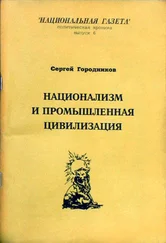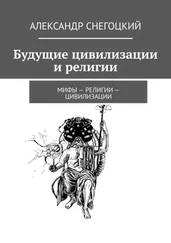United States Census Bureau, Patterns of Metropolitan and Micropolitan Population Change: 2000 to 2010 (2012).
Martin J. Schiesl, ‘The Politics of Contracting: Los Angeles County and the Lakewood Plan, 1954–1962’, Huntington Library Quarterly, 45:3 (Summer 1982), 227–43.
87 000 кв. километров.
Более 341 тыс. кв. километров.
32 километра.
1770 километров.
Becky M. Nicolaides, My Blue Heaven: life and politics in the working-class suburbs of Los Angeles, 1920–1965 (Chicago, 2002).
Почти 375 километров.
72,5 кв. километра.
1214 кв. километров.
Christopher C. Sellers, Crabgrass Crucible: suburban nature and the rise of environmentalism in twentieth-century America (Chapel Hill, 2012), p. 156.
Laura R. Barraclough, ‘Rural Urbanism: producing western heritage and the racial geography of post-war Los Angeles’, Western Historical Quarterly , 39:2 (Summer 2008), 177–80; Catherine Mulholland, ‘Recollections of a Valley Past’, in Gary Soto (ed.), California Childhood: recollections and stories of the Golden State (Berkeley, CA, 1988), p. 181.
Англ. Valley girl , то есть «девушка из долины».
Wade Graham, ‘The Urban Environmental Legacies of the Air Industry’, in Peter J. Westwick, Blue Sky Metropolis: the aerospace century in Southern California (Los Angeles, 2012); Martin J. Schiesl, ‘City Planning and the Federal Government in World War II: the Los Angeles Experience’, California History , 59:2 (Summer 1980), 126–43.
Mark L. Morgan and Mark A. Berhow, Rings of Supersonic Steel: air defenses of the United States Army 1950–1979, an introductory history and site guide (Bodega Bay, 2002), pp. 105ff.
Robert Kargon and Arthur Molella, ‘The City as Communications Net: Norbert Wiener, the atomic bomb, and urban dispersal’, Technology and Culture , 45:4 (October 2004), 764–77; Kathleen A. Tobin, ‘The Reduction of Urban Vulnerability: revisiting the 1950s American suburbanization as civil defence’, Cold War History 2:2 (January 2002), 1–32; Jennifer S. Light, From Warfare to Welfare: defense intellectuals and urban problems in Cold War America (Baltimore, 2003).
Kenneth Jackson, Crabgrass Frontier: the suburbanization of the United States (NY, 1985), chapter 11; Tom Hanchett, ‘The Other “Subsidized Housing”: Federal aid to suburbanization, 1940s-1960s’, in John Bauman, Roger Biles and Kristin Szylvian (eds.), From Tenements to Taylor Homes: in search of urban housing policy in twentieth-century America (University Park, 2000), pp. 163–79.
4,56 метра.
Jackson, p. 207.
Tobin, 25.
Waldie, p. 162; William Fulton, The Reluctant Metropolis: the politics of urban growth in Los Angeles (Baltimore, 1997), p. 10; David Kushner, Levittown: two families, one tycoon, and the fight for civil rights in America’s legendary suburb (NY, 2009), p. 190.
Англ. suburbia – дословно нечто «под-урбанистическое», низшее, худшее, чем город.
Досл. «Иисус из пригорода».
«Пригородные мечты».
«Ниггеры с мнением».
«Прямиком из Комптона».
Josh Sides, ‘Straight into Compton: American dreams, urban nightmares, and the metamorphosis of a black suburb’, American Quarterly, 56:3 (September 2004), 583ff.
Richard Elman, Ill at Ease in Compton (NY, 1967), pp. 23–4; Sides, 588.
Emily E. Straus, Death of a Suburban Dream: race and schools in Compton, California (Philadelphia, 2014), p. 107.
Edward Soja, Rebecca Morales and Goetz Wolff, ‘Urban Restructuring: an analysis of social and spatial change in Los Angeles’, Economic Geography 59 (1983); Sides, 590ff.
Judith Fernandez and John Pincus, Troubled Suburbs: an exploratory study (Santa Monica, 1982); Elizabeth Kneebone and Alan Berube, Confronting Suburban Poverty in America (Washington DC, 2013), pp. 8ff; ‘Crime Migrates to the Suburbs’, Wall Street Journal, 30/12/2012.
Joan Didion, ‘Trouble in Lakewood’, New Yorker, 19/7/1993; Graham, pp. 263ff.
Исп. barrio – городской район, квартал.
Edward Soja, Postmodern Geographics: the reassertion of space in critical theory (London, 1989), pp. 197ff; Edward W. Soja, Thirdspace: journeys to Los Angeles and other real and imagined places (Cambridge, MA, 1996); Mike Davies, City of Quartz: excavating the future in Los Angeles (NY, 1990); Roger Waldinger, ‘Not the Promised Land: Los Angeles and its immigrants, Pacific Historical Review, 68:2 (May 1999), 253–72; Michael Nevin Willard, ‘Nuestra Los Angeles’, American Quarterly, 56:3 (September 2004), 811.
Timothy Fong, The First Suburban Chinatown: the remaking of Monterey Park, California (Philadelphia, 1994); John Horton (ed.), The Politics of Diversity: immigration, resistance, and change in Monterey Park, California (Philadelphia, 1995); Leland T. Saito, Race and Politics: Asian Americans, Latinos, and whites in a Los Angeles suburb (Chicago, 1998), p. 23; Wei Li, ‘Building Ethnoburbia: the emergence and manifestation of the Chinese ethnoburb in Los Angeles’s San Gabriel Valley’, Journal of Asian American Studies , 2 (1999).
Fong, passim; Saito, pp. 23ff.
Saito, p. 23.
19,9 кв. километра.
Wei Li, Ethnoburb: the new ethnic community in urban America (Honolulu, 2009), pp. 103ff, 118, 153; Yu Zhou, ‘Beyond Ethnic Enclaves: location strategies of Chinese producer service firms in Los Angeles’, Economic Geography, 74:3 (July 1998), 228–51.
Англ. technoburbs .
243 человека на кв. километр.
44 400 человек на кв. километр.
5400 человек на кв. километр.
Denise Lawrence-Zúñiga, ‘Bungalows and Mansions: white suburbs, immigrant aspirations, and aesthetic governmentality’, Anthropological Quarterly, 87:3 (Summer 2014), 819–54.
2316 человек на кв. километр.
5598 человек на кв. километр.
Читать дальше
Конец ознакомительного отрывка
Купить книгу











